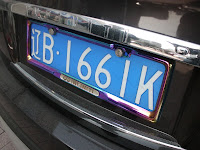Apologies for my recent lack of any thing resembling a blog post, but I have recently been busy teaching English in the evenings and doing an internship during the day. However, it’s not all bad, and the process of teaching has given me some inspiration for my next entry.
Whilst I was teaching at the language school the other day, my eye glimpsed upon a poster plastered upon the wall for classes with so called “famous teachers’, teachers whose status justifies payment of high salaries, and ensures that students are prepared to pay two or three times the normal amount in order to be taught by them. In itself this is not so strange, after all famous professors in the UK can justify bountiful appearance fees. However, what we are talking about is not university level instructors, rather those tasked to teach English to middle-school and high-school students. Teachers are undoubtedly respected in Western countries, but this level of reverence for what is essentially a teacher in a private language school is incredible. Confucius did of course establish a learning culture within China thousands of years ago, but modern China does not allow itself to be bound by historical legacies, and there can be no way the present cult of the teacher can be solely attributed to the great philosopher himself…?
First of all, it is easy to remember that China has a population which is absolutely vast. There is competition for job places, school places, university places, bus spaces; and the one time I went to Starbucks even that was a standing affair. So anything that can give an edge must be treated as an advantage, especially any form of proficiency in the world’s business language. So heralds the growth in English language schools. But is this just a profit making delusion, or a worthwhile use of a student’s time and parent’s money?
There would seem to be times when a language school’s desire to turn a profit would follow the same path as, and be conductive to, a student’s learning. Well, in my recent experience, not necessarily. A quick check of one of China’s video sites brings up many videos of so-called ‘famous teachers’, many taken hidden-camera style as paparazzi may snap a celebrity. And unfortunately these ‘famous teachers’ are too often indeed redolent of entertainers. In the majority of the videos they are signing, dancing, or doing something else to amuse the students. Often not even in English, the teachers add to their cult of personality by providing enjoyment. Students love it, and they want to come back to the school. Parents love it because their children are happy and it seems like they are learning. The teacher loves it since he is earning more money and reputation. And the language school loves it too since they are securing repeat business and buffing their coffers. Yet it is clear the whole cycle is delusionally flawed, quality teaching is merely displaced by entertainment, parents are hoodwinked into believing class is actually doing something good for their children, and the language school are well-aware that such a method provides rich rewards.
Unfortunately these events are to the detriment of the student: they are learning nothing. It may be fun, but the academic goal that should be central to the whole process is somehow lost in the process. And this is just a single language school. Here in China there are many other schools most likely doing the same thing.
For my part, I try to do some quality teaching. Unfortunately too many students and their parents believe that the mere process of giving money to the language school in enough to secure linguistic proficiency. They send texts, and talk in Chinese, and play games consoles and mess around. They do not do any learning or studying: suffice to say, these things are quite important to improving language ability. It seems perhaps that entertainment even with a bit of teaching is the lesser of two evils.




 In this image a family is drawn together in harmony, expressing their positive outlook through the ubiquitous V-sign gesture, symbolising cheerfulness and indefatigability. Of particular interest, this model Chinese family is twisted slightly from the norm, two cute children lurking behind instead of the normal one. A clever subtle note of defiance from the graffiti artist?
In this image a family is drawn together in harmony, expressing their positive outlook through the ubiquitous V-sign gesture, symbolising cheerfulness and indefatigability. Of particular interest, this model Chinese family is twisted slightly from the norm, two cute children lurking behind instead of the normal one. A clever subtle note of defiance from the graffiti artist? Here there is a celebratory image of the successful Chinese space mission of 2003, which propelled China as the third-nation to enter space. There is a blissful innocence to the image, which discounts the globo-political motivation for the mission. Of further interest is the image of two astronauts next to each other. In fact, China has only sent one astronaut into space, Yang Liwei.
Here there is a celebratory image of the successful Chinese space mission of 2003, which propelled China as the third-nation to enter space. There is a blissful innocence to the image, which discounts the globo-political motivation for the mission. Of further interest is the image of two astronauts next to each other. In fact, China has only sent one astronaut into space, Yang Liwei.




